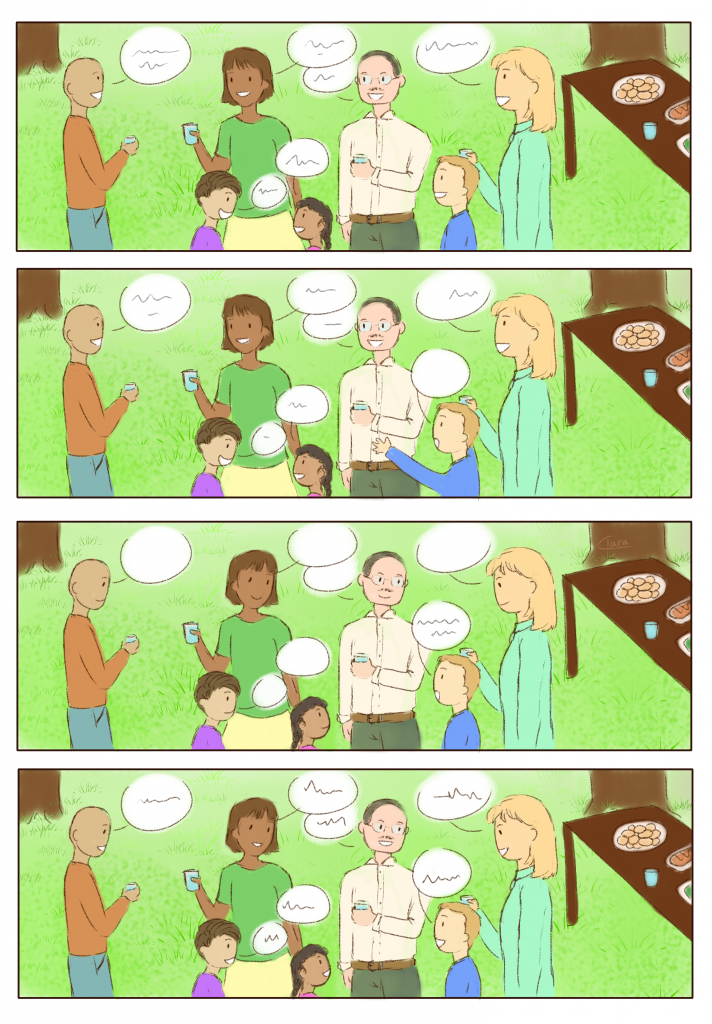How can I help a child who stutters?

Speech can seem almost effortless. Sometimes, though, we may pause to find the right word or we may involuntarily repeat part of a word. These breaks in the flow of speech are called speech disfluency. Most often, speech disfluency happens because of the content of our speech or our emotional state. For example, we may stutter more if we are not very familiar with the topic or when we are very stressed or excited. Some speech disfluencies are a normal part of conversation, like when we say ‘um’!
When speech disfluency happens often and interferes with communication, it is considered a speech disorder. One common form of speech fluency disorder is ‘stuttering’. Stuttering is when someone repeats part of a word, like “f-f-f-ish”. It can also include other characteristics that may be harder to notice, like elongating sounds in a word or building up pressure in the mouth before producing a sound. Childhood stuttering can be temporary (just happen during a period) or lifelong (continue to occur into adulthood). It can start as early as when children start speaking more, at around 2 years of age.
Scientists still do not know why stuttering occurs, but they think that it might be caused by brain differences during development. Caregivers of children who stutter can complement children’s sessions with their speech-language pathologist or therapist by creating a supportive, communicative environment that makes a child feel less pressure when speaking. Caregivers can encourage children to speak about new or unfamiliar topics by actively listening. They can also lift time pressure by structuring conversations to give the child plenty of time to speak and finish their sentence.
Importantly, caregivers can teach the child to not be ashamed that they speak differently from others!
This comic was created in collaboration with Dr. Janet Bang, Dr. Pei-Tzu Tsai, and Caryn Iwakiri.
The scientific sources of our comic:
Ambrose, N. G., & Yairi, E. (1999). Normative disfluency data for early childhood stuttering. Journal of Speech, Language, and Hearing Research, 42(4), 895-909. https://doi.org/10.1044/jslhr.4204.895
Byrd, C. T. (2018). Assessing bilingual children: Are their disfluencies indicative of stuttering or the by-product of navigating two languages?. In Seminars in Speech and Language (Vol. 39, No. 04, pp. 324-332). Thieme Medical Publishers.
